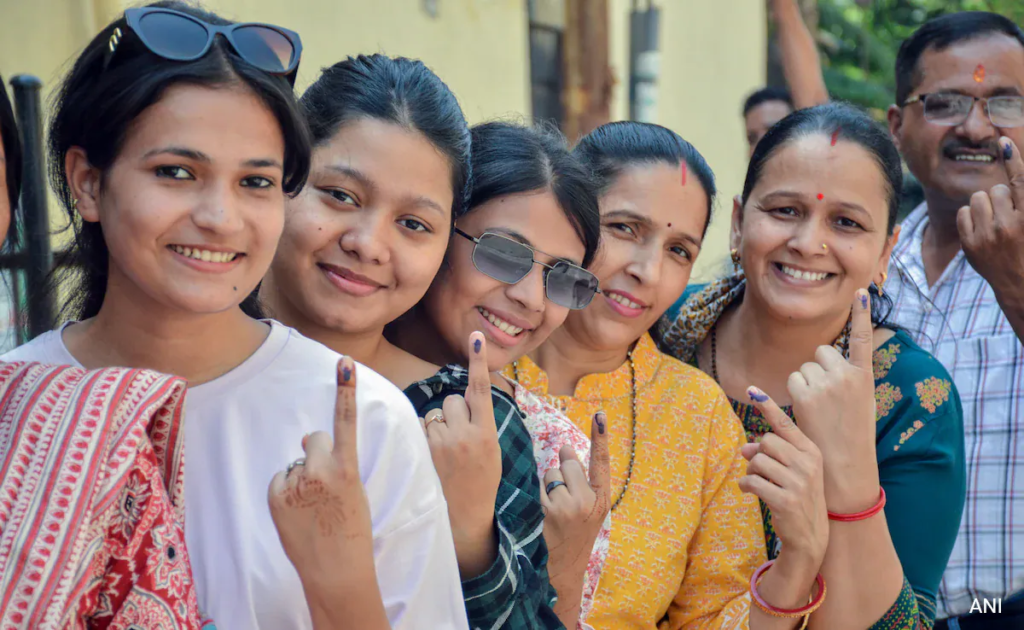Second Phase of Uttar Pradesh Elections
Second Phase-Introduction: The second phase of elections in Uttar Pradesh (UP) is poised to witness a three-cornered contest as voters head to the polls tomorrow to decide the fate of candidates vying for eight crucial seats. With political parties intensifying their campaigns and rallying their supporters, the electoral battleground in UP is heating up. This article delves into the dynamics of the second phase, analyzing the key players, issues, and implications of this closely watched electoral contest.
Second Phase-Political Landscape: UP, often considered the heartland of Indian politics, holds immense significance in the country’s electoral landscape. As India’s most populous state, UP wields considerable influence in national politics, making elections here crucial for political parties eyeing power at the center. The state’s complex social fabric, diverse demographics, and varied regional dynamics make elections in UP inherently competitive and unpredictable.
Three-Cornered Contest: The second phase of UP elections will witness a three-cornered contest primarily among the Bharatiya Janata Party (BJP), the Samajwadi Party (SP), and the Bahujan Samaj Party (BSP). While the BJP, led by Chief Minister Yogi Adityanath, aims to retain power on the back of its developmental agenda and Hindutva rhetoric, the SP, under the leadership of Akhilesh Yadav, seeks to reclaim lost ground by leveraging anti-incumbency sentiment and focusing on social welfare issues. The BSP, helmed by Mayawati, is attempting to stage a comeback by consolidating Dalit support and projecting itself as a viable alternative to both the BJP and the SP.
Key Constituencies: The eight seats up for grabs in the second phase are spread across various regions of UP, each with its unique socio-political dynamics. These constituencies include [list of constituencies], where candidates from the BJP, SP, BSP, and other smaller parties are locked in intense electoral battles. The outcome in these constituencies will not only shape the political landscape of UP but also have far-reaching implications for the national political scenario.

Campaign Dynamics: The run-up to the second phase of elections has witnessed frenzied campaigning by all major political parties. Leaders crisscrossed the state, addressing rallies, conducting roadshows, and wooing voters through various outreach programs. While the BJP showcased its achievements in governance and national security, the SP and BSP focused on issues such as unemployment, inflation, and social justice. The campaign rhetoric often turned acrimonious, with parties trading barbs and accusations amidst a charged atmosphere.
Issues at Stake: Several issues dominate the electoral discourse in UP, reflecting the aspirations and concerns of its diverse populace. Unemployment, agrarian distress, healthcare infrastructure, law and order situation, and caste-based politics are among the key issues that resonate with voters. Additionally, issues like religious polarization, women’s safety, and environmental conservation have also found prominence in the electoral narrative, shaping the preferences of voters across the state.
Voter Dynamics: UP boasts a vast and heterogeneous electorate comprising people from various castes, communities, and economic backgrounds. Understanding the voter dynamics is crucial for political parties seeking electoral success in the state. While caste and religious affiliations often play a significant role in shaping voting patterns, factors like governance performance, candidate selection, and campaign messaging also influence voter behavior. Parties employ various strategies, including caste-based alliances, social engineering, and targeted outreach programs, to woo different segments of the electorate.
Implications: The outcome of the second phase of UP elections will have far-reaching implications for the political landscape of the state as well as the nation. A strong showing by the BJP would bolster its prospects of retaining power in UP and provide a significant morale boost ahead of the general elections. Conversely, a resurgence of the SP or BSP could herald a shift in the state’s political dynamics and impact the BJP’s dominance in the region. Moreover, the performance of smaller parties and independent candidates could potentially alter the electoral arithmetic and shape future alliances and coalitions.
Conclusion: As Uttar Pradesh braces for the second phase of elections, all eyes are on the eight constituencies witnessing a three-cornered contest among the BJP, SP, and BSP. The outcome of these elections will not only determine the fate of individual candidates but also set the tone for the larger political landscape in the state and the nation. With voters exercising their democratic right tomorrow, the stage is set for a riveting electoral battle that will shape the course of politics in Uttar Pradesh and beyond.

[…] Deep-Introduction: In the dynamic landscape of global politics, few relationships are as consequential and complex as that between China and the United […]
[…] central United States, affecting millions, there’s a whirlwind of events across the nation demanding attention. Here are five critical updates to keep you informed and […]